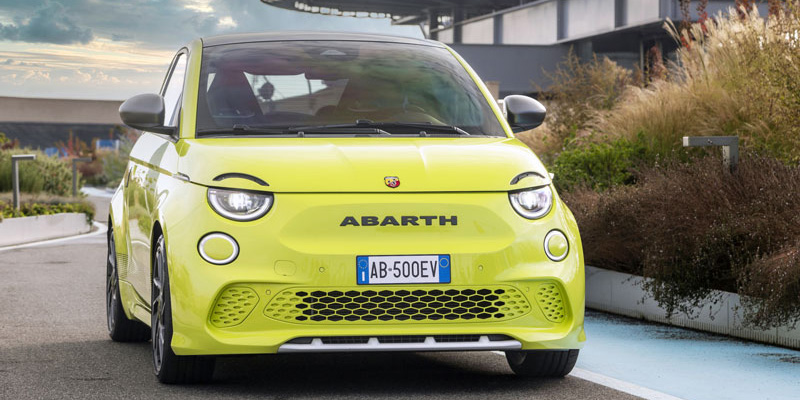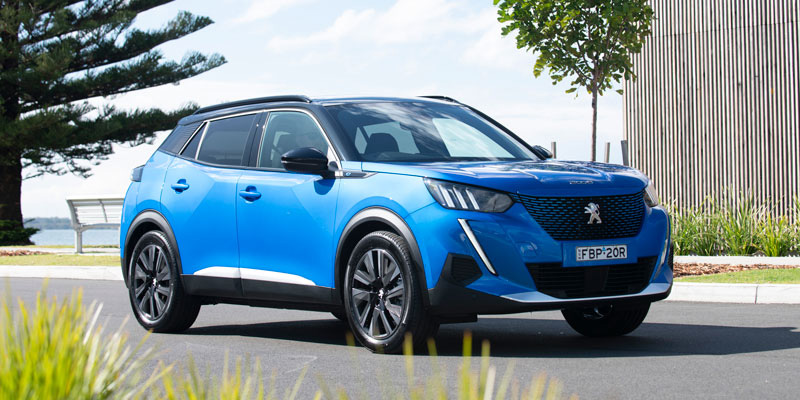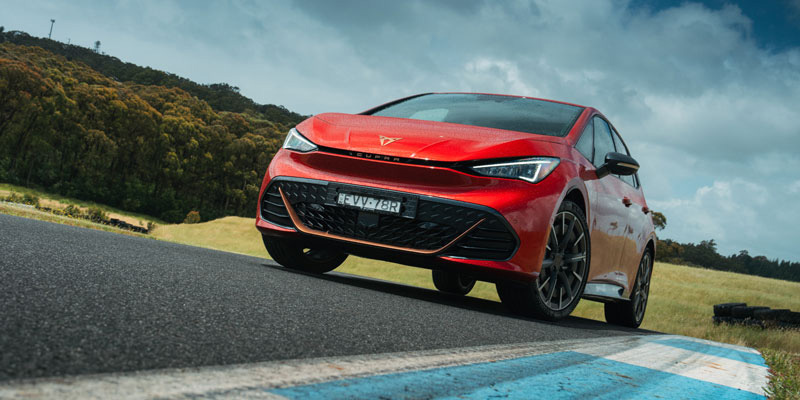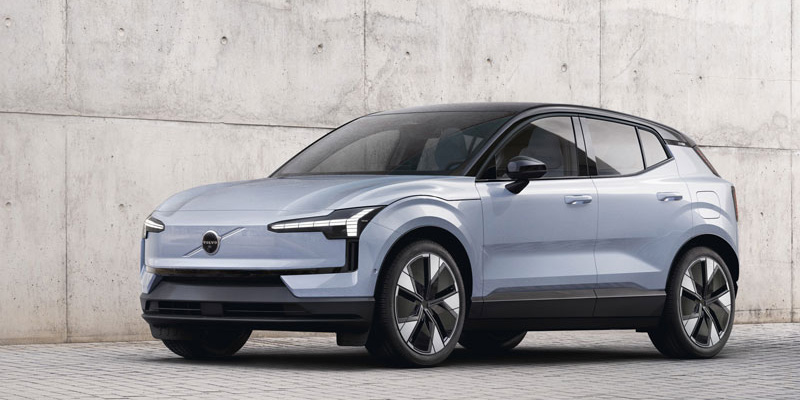

In just a matter of years, electric vehicle (EV) sales have increased from less than 1 per cent of new car sales to 7 per cent mark according to the latest figures from Vfacts.
While there is clearly plenty of room for growth, uptake is on the increase; and it's not just the high-end models making headlines anymore.
In particular, 2023 has seen more affordable electric vehicles arrive on Australian roads than ever before, with the BYD Dolphin and MG’s MG4 claiming the titles of cheapest electric vehicles with prices under the $40,000 mark in July.
We’ve also covered these along with three other affordable EVs (the GWM Ora, the MG ZS EV and the BYD Atto 3) here.
Now, we explore the newest electric hatchbacks, sedans and SUVs priced under $60,000 to join the EV market in Australia in recent and coming months.
All these vehicles fall under EV rebate thresholds in South Australia and NSW, although the latter is due to end in December.
The 2023 Fiat 500e electric hatch arrived in Australia in late September with what is a hefty price tag for your average Fiat: $52,500 plus on-road costs, making it the most expensive Fiat ever sold in the country.
However, its sub-$55,000 price tag is still at the lower end of the price spectrum for EVs in Australia, particularly for drivers looking for classic retro cool - case in point being the Mini Cooper SE which retails from $59,990 before on-roads.
(Though the pricing for the runout Cooper SE was dropped $10,000 by Mini in early November, pricing for the 2024 model has not yet been confirmed and is likely to be higher.)
On the front axle, the Fiat 500e is fitted with an 87kW/220Nm electric motor, while under the floor sits a 42kWh battery pack that delivers 311km WLTP driving range.
Acceleration from 0 to 100km/h is a modest 9.0 seconds, and it can fast charge on a DC unit at a top rate of 85kW, topping up from 0 to 80 per cent in around 35 minutes.
The single La Prima variant is well-equipped with features and advanced safety systems, some of which were not available on the previous petrol Fiat 500.
However, the Fiat 500e gets a four-star rating from safety body ANCAP, missing out on the full five stars due to the lack of reversing sensors.
It also did poorly on passenger protection due to the lack of a centre airbag.
Features include 17" alloy wheels, a panoramic roof, leather seats, rain-sensing wipers, adaptive cruise control, LED headlights, 7.0-inch digital display, 10.25-inch touchscreen, keyless entry, and a wireless smartphone charger.
Parking sensors, rear-view camera, blind-spot monitoring, lane keep assist, lane departure warning and emergency lane keeping come as standard. It’s available in six cool, retro-inspired colours: Ice White, Onyx Black, Ocean Green, Mineral Grey, Rose Gold, Celestial Blue.

There may be a cheaper version of the Fiat 500e released in the future, although we’re not holding on to our hats for it anytime soon.
Rather, a premium-priced Abarth 500e hot-hatch in two variants is expected to arrive in the last months of 2023.
The Abarth 500e Scorpionissima is priced from $60,500 before on-roads, while the Abarth 500e Turismo costs $58,900.
The front-wheel-drive Abarth 500e packs a 113.7kW electric motor and can go from 0-100km/h in a relatively modest 7.0 seconds.
It has the same 42kWh battery pack and 85kW charging capability on a DC fast charger as the Fiat 500e, while the more powerful motor means WLTP range drops down to 252km.
Keen to keep hot hatch enthusiasts on side, the Abarth 500e has an iconic engine sound courtesy of a “Sound Generator.”
The Abarth 500e has no official safety rating but includes a blind spot monitor, front, side and rear parking sensors, rear view camera, autonomous emergency brake and traffic sign recognition, intelligent speed assist, driver attention alert and lane control.
Colour-wise, the Abarth 500e comes in a range of five colours named to evoke the brand’s stinging? presence on the road: Acid Green, Poison Blue, Antidote White, Venom Black, and Adrenaline Red.

The BYD Seal electric sedan is expected to arrive on Australian roads by the end of 2023.
Available in three variants – the Dynamic, the Premium and the Performance, prices range from $49,888 to $68,748 plus on-road costs, with the Performance price dropping $50 shortly after launch to bring it under state rebate thresholds.
The BYD Seal is the third high-volume model to be introduced by the Chinese carmaker’s importer EV Direct and competes sharply on price against rivals like the Tesla Model 3 and the Polestar 2.
Specs for the Seal Dynamic include 150kW/310Nm electric motor, a 61.44kWh battery, and a stated WLTP driving range of 460km.
The Premium model sits in the middle at $58,798 and has a 230kW/360Nm rear electric motor, an 82.56kWh battery, and a driving range of 570km.
The Performance AWD model tops the range, has a combined 390kW/670Nm and sprints from 0 to 100km/h in a lightning fast 3.8 seconds.
It has an 82.5kWh battery and a WLTP driving range of 520km. 2024 BYD Seal Dynamic features include 18-inch alloy wheels, LED headlights, 15.6-inch touchscreen, synthetic leather seats, power-adjustable seats, and a Dynaudio sound system.
Specs also include dual-zone climate control, keyless entry, wireless phone charging, panoramic glass roof, power tailgate, USB ports, rear privacy glass, and heated side mirrors.
Having recently been awarded a five star ANCAP safety rating, all Seal variants sport a wide range of safety tech such as parking sensors, rear-view camera, emergency braking, lane-keep assist, adaptive cruise control, blind-spot monitoring, cross-traffic alert, door exit warning, traffic sign recognition, high beams, and nine airbags.
The BYD Seal Premium gets upgraded brakes, 19” alloy wheels, a head-up display, leather seats, four-way power front seat lumbar adjustment, memory seats and side mirrors.
Added to these specs, the BYD Seal Performance is offered with dual-motor all-wheel drive, torque vectoring, heated steering wheel, advanced selective frequency damping, and an electronic child lock.

Peugeot’s first battery electric vehicle on the Australian market is expected to arrive on Australian roads in late 2023.
Available initially in limited numbers in a single mid-grade variant priced from $59,990 before on-roads, this smart electric wagon will compete against the Hyundai Kona EV on price.
Powering the e-2008 is a 100kW/260Nm motor, while a 50kWh battery offers 328km WLTP driving range, and which Peugeot says can be recharged from 0 to 80 per cent in half an hour at a max rate of 100kW.
On an AC charger it can charge at a max rate of 11kW, for a recharge in five hours if connected to a three-phase wall charger.
Additionally, this spacious SUV has ample boot space of 434 litres, which can be expanded to 1,467 litres by folding down the rear seats.
There is no current safety rating for the electric version of the Peugeot 2008, which was last tested in 2019.
Safety features include adaptive cruise control, autonomous emergency braking, blond spot detection, lane departure warning, acoustic vehicle alert system, and a traffic safety suite, which consists of vehicle distance alert, driver attention alert and traffic sign recognition.

The Cupra Born electric hatch arrived in Australia priced just below the $60,000 mark and until the Volvo EX30 lands, is the most economical electric car from a European brand in Australia.
Its 82kWh battery offers a generous 510km WLTP driving range, while its 170kW/310Nm rear-wheel-drive powertrain can go from 0-100km/hr in 7.0 seconds - performance on par with the entry-level Tesla Model Y or the mid-range Audi A3.
Inside there is Apple CarPlay/Android Auto compatibility, climate control, and safety attributes such as a 360-degree camera, adaptive cruise control, cyclist and pedestrian detection with front, lane and park assist, and autonomous emergency braking.
Along with these safety features comes a five-star ANCAP rating.
An interior pack worth $2,900 adds heated “Dinamica” blue front seats, 12-way power seats with massage function, two seats in the back instead of a three-seat bench, heated washing jets and a nine-speaker sound system.
A performance pack reduces range to 475km but adds chassis control, 20” alloys with 235mm Michelin Sports and the two rear seats option.

Volvo unveiled the new EX30 ultra-compact SUV in June, which it says has the lowest carbon footprint of any Volvo made.
Starting from $59,990 before on-road costs, there are three EX30 variants with a 69kWh battery option: A Single Motor Extended Plus, Single Motor Extended Ultra for $64,990 and Twin Performance Ultra for $69,990.
Both single motor variants pack a 200kW/343Nm motor on the rear axle, and its 69kWh battery delivers up to 480km driving range based on the WLTP testing cycle.
Meanwhile, the twin motor variant delivers a maximum of 315kW power and 543Nm torque, with the extra power reducing its range to 460 kilometres according to global WLTP figures.
All variants can recharge from 10 to 80 per cent in about thirty minutes, with a maximum charge rate of 134kW.
In keeping with the brand’s sustainable goals, the EX30 features a leather-free interior made from recycled and renewable materials like flax, wool, and denim upholstery made from denim waste fibres.
While the EX30 is yet to secure an official ANCAP safety rating, it is equipped with all the safety features one would come to expect from Volvo.
These range from lane keep assist features and blind spot monitoring with steer assist, intersection and collision avoidance braking and steering, to sensors, braking and steering to detect and avoid vehicles, cyclists, and pedestrians, as well as rear collision warnings and rear cross-traffic and front cross-traffic alert with auto braking.
Also included are road sign information, intelligent speed assist, adaptive cruise control, pilot and lane change assist, distance to truck assist, park assist camera, rear view, and door opening alerts.
First customer deliveries of the EX30 are expected in early 2024.
For more information on all vehicle specifications and pricing you can visit NRMA's EV search tool here
